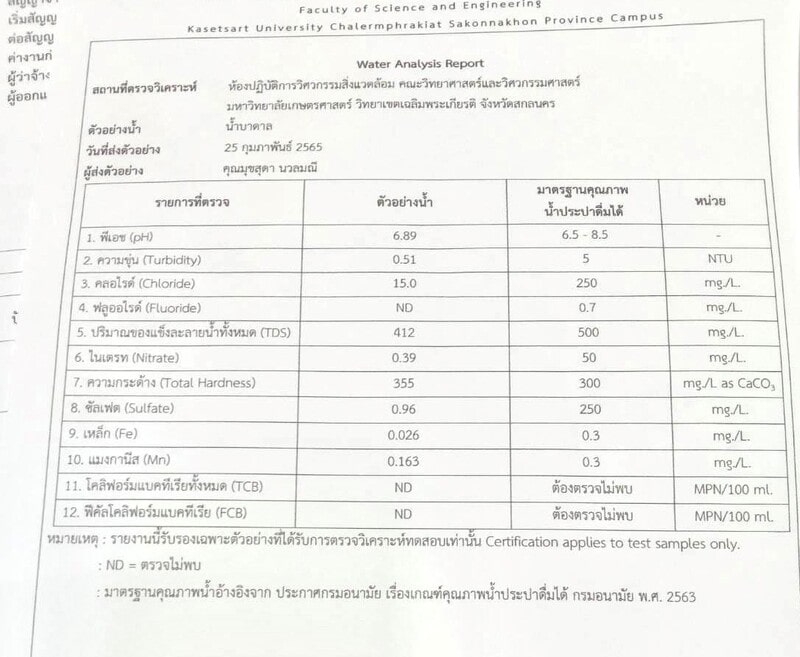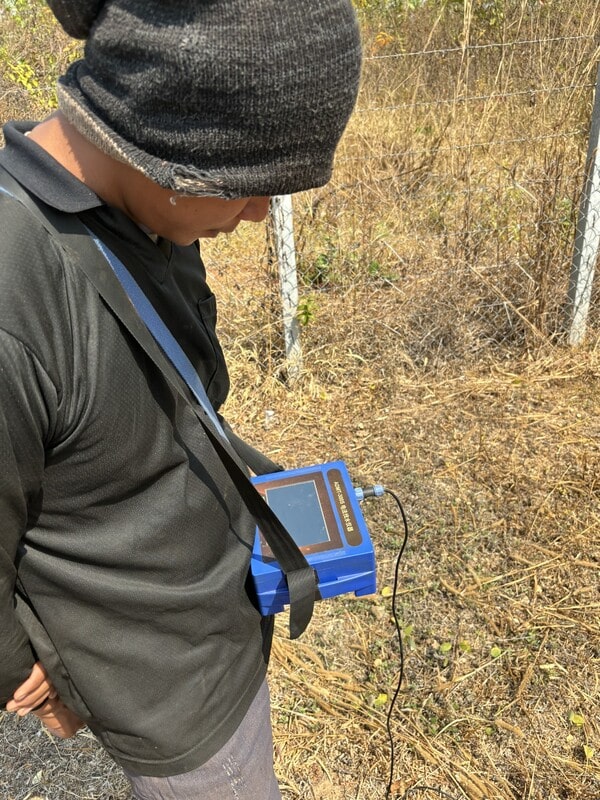
Since the local community does not offer water supply in our region, we are forced to drill for water. The drilling was completed within a day. For future water extraction, this company uses wash drilling with water. The water turned out to be enough. Officially, the well was 50 meters deep. Unfortunately, this turned out to be incorrect when we went to install the pump. The company was called back to drill to the agreed depth.

Well Water Video


The tubes of 4 meter each are prepared to connect to each other to build a suction line.

The first tube is attached to the pump. Now screw on 10 tubes of 4 meters each one after the other. Specification of the pump we use: 1100Watt, 1.5 horse power, model ZB-95QJD5-67/10-1, suction depth 60 meters, With a suction depth of 60 meters you get 17 liters per minute. With a suction depth of 55 meters you get 25 liters per minute. With a suction depth of 15 meters you get 50 liters per minute.
The electric motors of the pumps are 3-phase motors. When connected to a 230 Volt mains supply and due to the absence of the 3rd phase, it must be taken into account that the power of the motor decreases to approximately 70% of the specified power. The diagram shows shows how the 3-phase motor is connected to a 230 Volt mains supply. By use of a capacitor a phase change is created, which is necessary to let the electric motor turn.
The picture below shows the connection box with capacitor


Well Water Video

Three man are needed to hold the pump attached to a loooong pipe.
The Kasetsart University carried out a water analysis with the measurement results shown on the picture.

Measured and recommended values.
⚬ PH is 6.89 recommended: 6.5 to 8.5
⚬ Turbidity is 0.51 recommended: 5 NTU or less (Nephelometric Turbidity Units)
⚬ Chloride is 15.0 recommended: 250 mg/l or less
⚬ Fluoride not detected
⚬ TDS is 412 recommended 100 to 250 (500 mg/l or less) (Total Dissolved Solids)
⚬ Nitrate is 0.39 recommended: 50 mg/l or less
⚬ Total hardness is 355 recommended: 300 mg/l or less
⚬ Sulfate is 0.96 recommended: 250 mg/l or less
⚬ Fe is 0.026 recommended: 0.3 mg/l or less
⚬ Mn is 0.163 recommended: 0.3 mg/l or less
⚬ TCB not detected
⚬ FCB not detected
It seems only hardness is outside the scope. Hard water is not a health risk but it will build mineral on shower head as example.We use strong magnets to soften the spring water. These are the best alternative to an expensive water softener with salt.

What's somewhat surprising is that the temperature of our well water remains consistently the same throughout the year. 28 (twenty-eight!) degrees Celsius, while the majority of voices on the Internet expect a temperature of around 15 degrees Celsius. So far it's been a nice energy saver because we like to shower at a temperature of around 38 degrees. It makes a big difference to heat the water from 28 to our beloved 38 degrees rather than from 15 to 38 degrees.
After the pipes of the old pump broke twice and less and less water was pumped, we decided to drill a second well. This time we made use of the experience of a monk who had installed some well pumps on his temple complex and operated them with solar energy. For the second drilling, the principle of airlift drilling was adopted. Btw for the first drilling, the principle of wash drilling (flush drilling) was adopted. When we replaced the pipes of the first well pump, we used 3 fewer pipes, each 4 meters long. To our surprise, the pump was able to pump enough water due to the lower height. The reason for this is still a mystery to us today.

For the airlift drilling they use a 150kW Atlas Copco diesel air compressor able to supply 14 m3/min or for better understanding 238 liter air in one second second, as a comparison, our lungs have a capacity of 5 to 7 liters.

In order to find a good place for the new well, first the conductivity of the soil is measured at great depth to determine water (moisture) in the ground. The result is then checked again with an old-fashioned dowsing rod.
Well Water Video
At first we were worried because the length of the power cable from the house down to the pump is about 120 meters. When using the new pump the grid voltage we measured at the solar inverter drops from around 230VAC to 220VAC which seems acceptable - No worry. In Europe the NEN-EN 50160 says: The voltage may never deviate more than 15% downwards (195.5 volts) and never more than 10% upwards (253 volts). During at least 95% of the measuring time the voltage may not deviate more than 10% downwards (207 volts).
Thailand pictures and videos can be used and shared with others if the originated page is credited. For credit use this link: ThaiHome.pics Thank you! | Q&A
Content last change: September 04 2024